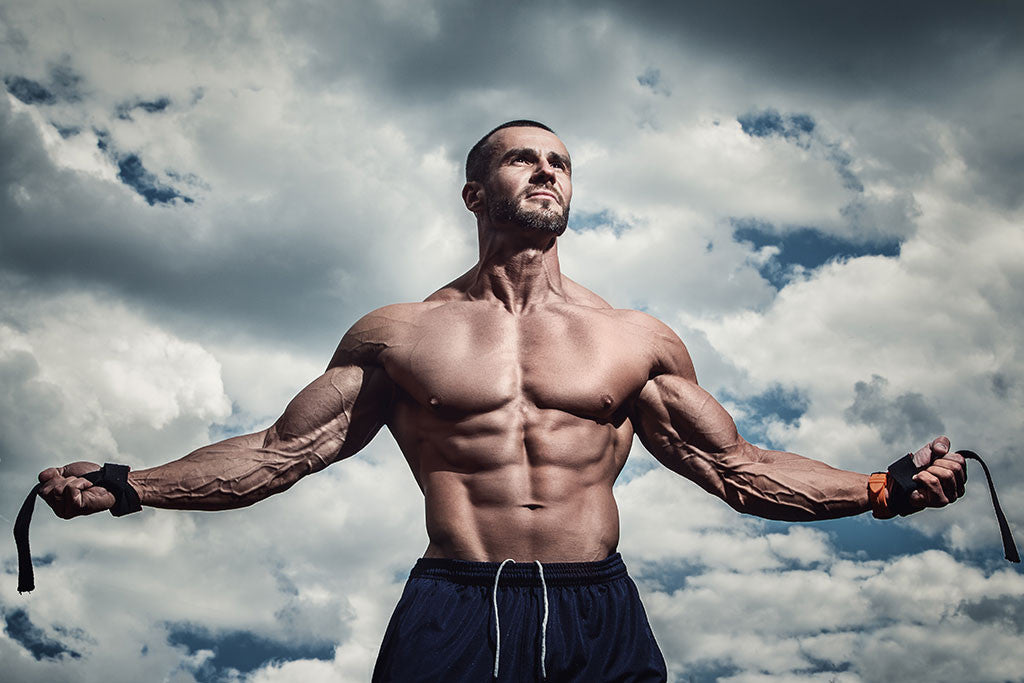It's no secret... big arms are an addiction over which most people are powerless. Like alcohol, drugs and any other substance that requires treatment, the only remedy for the quest for big arms is a good gym, a great diet and all of the rest of what we’ve listed below.
Diet, of course, is crucial for all growth, so an “arm diet” isn’t necessarily what you’d eat for a good pair of them alone. You’ll benefit from a great diet under all circumstances because you’ll be feeding and rebuilding your body in a way that optimizes muscle growth and minimizes wasting or fat retention.
You can’t go wrong with these 10 prescriptions – both for the arms or for any body part workout.
Periodization
A lot has been written on this topic, but not a lot of guys really know what it is if you ask the question, “What kind of periodization do you follow in your workouts?” Periodization is merely the way in which you categorize and organize your workouts.
Periodization is an organized approach to training that involves progressive cycling of various aspects of a training program during a specific period of time. The roots of periodization come from Hans Selye’s model, known as the General Adaptation Syndrome, which has been used by the athletic community since the late 1950s
Periodization is in place in a bodybuilder’s repertoire to avoid one thing: Overtraining. But it’s also there to alternate high loads of training with decreased loads to continually keep the muscle guessing and in its best condition.
There are three types of periodization cycles: the microcycle, the mesocycle, and the macrocycle. The microcycle is generally 7 days. The mesocycle may be anywhere from 2 weeks to a few months and can further be classified into preparation, competition, peaking, and transition phases. The macrocycle refers to the overall training period, usually representing either six months or a year.
Think of the micro, meso and macro cycles as a way to view the workout up close and from a distance. It’s important to be able to do this because a) it means you actually have a plan, and b) you know where you’re going and why. In other words, there’s a method to your madness. And we definitely know you’re mad to hoist the kind of weights you do!
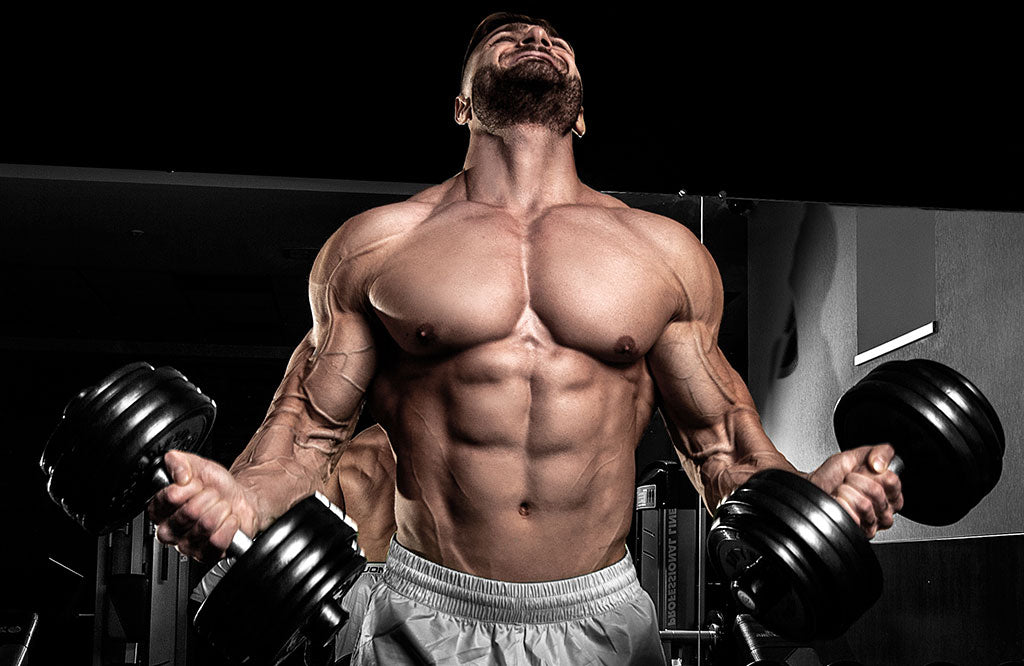
Periodized Workout Types
Traditional: Volume and intensity are systematically manipulated. Training cycle begins with a high-volume, low-intensity profile, then progresses to low volume, high intensity over time.
Step wise: Like the traditional model, intensity increases and volume decreases during the training period. Volume is decreased during the training period. Volume is decreased in a stepwise fashion: Repetitions are reduced from eight to five, five to three, and so forth, at specific time intervals.
Undulating: Training volume and intensity increase and decrease on a regular basis: but they do not follow the traditional pattern of increasing intensity and decreasing volume as the mesocycle progresses (Fleck 1999).
Overreaching: Volume or intensity is increased for a short period of time (one to two weeks), followed by a return to “normal” training. This method is use primarily with advanced strength trained athletes.

21′s, Forced Reps, Negatives and other set types
A biceps workout wouldn’t be complete without a talk on 21’s. It’s the single best set and rep pattern for biceps that you can do. So rather than just doing 6-10 reps, you will be doing 21. But hold the phone, because it’s not full repetitions that you will be doing. First, you’ll do 7 reps in a full range of motion – slowly and deliberately. Next, you’ll do the lower half of the range for 7 reps. In order to round out the total 21 reps you’ll complete 7 reps within just the upper ROM – bring the bar up to the halfway point, where your forearms are parallel to the floor and go up from there and squeeze. These partial reps allow you to focus on the range as though it were the only range and that means extra squeezing and focus on particular areas of the biceps throughout the motion.
Sounds easy, but once you begin doing 21’s, you’ll see just how much pump and burn you’re going to get out of them and how grueling they can be. These are vital to your success with biceps work because they force you into fatigue situations where emphasis is placed on varying parts of the ROM. This combination of stress and angle are crucial for facilitating growth of the arms – both biceps and triceps.
Twenty ones can be done with a straight bar or an EZ curl bar. You can also do them with an arm blaster and an EZ curl bar so that you immobilize the movement of the upper arm. This will also hit the difficult to hit inside portion of the biceps that creates the illusion of girth in a front double biceps shot and adds peak to your biceps since your arms are locked in to the body.
But don’t forget other workout repetition types. Capitalize on arm growth by utilizing forced reps with a partner or on a preacher curl bench, one arm at a time, assisting yourself or with a partner.
Negative reps are also beneficial, particularly when doing biceps in an arm blaster apparatus, or alone – bar or dumbbell. The point is that through a variety of set types you can achieve things you would not be able to achieve just repeating a series of ho-hum garden variety sets and reps.
In fact, employing training methods in the form of varied set types also keeps you engaged mentally too. Just do what you’ve always done, with no variety, and pretty soon you’ll check out mentally whether you wanted to or not. Engage your mind and your arms with variety, choice and varying degrees of difficulty and challenge, and you’ll have to stay engaged mentally. This is also a good way to engage in mind-muscle connection which is so crucial to workouts.

Diet
Diet is such a subjective matter. But a diet that keeps an eye on protein, especially, is better than a diet filled with junk or haphazardly put together – it just goes without saying. After that, it should have ample protein and ample calories if growth is the goal.
The single biggest mistake amateur bodybuilders make, after the quality of diet, is getting the quantity wrong. You have to keep calories high, high and HIGHER if you want to pack on mass.
Calories need to come from 30% protein, 50% carbs and 20% fat when you’re building mass – no exceptions. Here’s a good meter of grams of each broken down by meal. If you don’t work out in the morning, then flip the pre and post meals around to afternoon.
Pre-WO Meal: 140 g carbs, 47 g protein
Post-WO: 140 g carbs, 47 g protein
3rd Meal: 90 g carbs, 60 g protein
4th Meal: 90 g carbs, 60 g protein
5th Meal: 30 g carbs, 45 g protein
Fat shouldn’t be metered out, despite me saying 20%…. flax, fish oil caps, peanut butter (natural), almonds, etc. are all fair game. This plan should net you around 4000 calories at the minimum and between 5000 and 6000 at the maximum.
A good example of what the above would be, using one meal as an example is this:
8-10 oz. steak (60 grams protein) + 2 cups of rice + bowl of mixed vegetables (90 grams carbs)
Your 140 gram carb meals should come from powdered carb forms and powdered protein forms in a shake mixture. There is no way you can eat that amount of carbs in solid food form, let alone protein, and train. Nor could you hack it after. Remember to add some flax oil into those shakes – a couple of tbsp. And don’t forget to add fat to the other meals, in the form of almonds, peanut butter, flax, fish oil caps, avocado, or in the form of fattier meats. It’s always best to eat lean cuts, but not so lean that you keep calories low.
Post workout nutrition – A Primer on Protein
There’s good diet and then there’s post workout nutrition. Separating them is crucial because the prescriptions are more clearly drawn out for post-workout nutrition. Simply writing out a diet for someone usually doesn’t cover how to eat immediately following a workout. And eating after a workout is how you optimize all that you’ve just accomplished in the gym.
So much has been written about protein intake, and the appropriate type of protein. Whey, is of course, the superior choice there, but these days with technology and marketing, there are many cross-filtered and combinative products that make choosing the single protein that will optimize all growth, sometimes confusing.
Whey protein is the gold standard, and one person might tell you that the way that EAS does it is better than the methods Designer Protein uses, but the main thing is to try the protein for yourself. Not only is taste important, it is the single reason you’ll either mix a glass of protein up, or not. If you hate the taste of a protein you bought in a big 5 pound sack, it could be the best protein in the world and you won’t drink it because you hate the taste.

Also, you’ll notice that you have a greater sense of well-being on one protein than another. One of those earmarks is whether the protein produces gas and bloat or not. If it doesn’t, it’s obviously a better choice for your body than one that does. Brand to brand, everyone reacts differently. It’s just important that you have protein supplementation in your diet.
Now for post-workout shakes… Probably the two most important meals of the day are the first one, and the one just following your workout. So no matter when you work out, you need to keep in mind that having nutrition at the ready is essential to your success. Without that ready and waiting for you once you finish your workout – either in the form of a restaurant down the block, chicken and rice in a container in your locker or car, or a shake that just needs water added to it to feed your body after a high intensity workout.
Food is never the wrong thing to eat, but a lot of people can’t force food down their throat after a grueling, sickening workout. Leg workouts, and to some extent, arm workouts, are just those types. I don’t know about you, but I get physically sick with biceps pain- and angry. It takes me awhile to get over that physically and food is the last thing I want. Yet, I know if I don’t eat right after, I’m not going to start the repair process and that window is a small one.
It’s one reason to recommend a shake, rather than a full meal. That shake is then followed up by a meal in about 1-2 hours after when the appetite returns and recuperation begins. That’s the time when you come home, shower, and kick back on the couch with things like chicken or steak and a big fat yam. Carbs are just as important post-workout – even if you are counting carbs – that’s one of the times to take them in.
A good post-workout meal should include around 50 grams of protein, glutamine, 100+ grams of simple carbs (ideally not sugar, but that’s what some people use to carry all of the nutrients quickly into the muscle) – a good carb choice might be a carbo powder that comes from a stable source.
A good choice might be protein powder, glutamine, a little creatine to replenish, a tbsp of peanut butter and a tbsp of low sugar jam, blended with milk and water or just water. You can buy one of those individual blenders to keep in your car or gym bag – they make combining these ingredients easy and fast.

Skull crushers
We separate this out from a general workout because skull crushers are one of the best triceps exercises you can do – not including them in your workouts is like going into a lion’s den, defenseless.
Biceps get 21’s and negative reps as the variety that muscle group needs to grow. But what of the triceps? You cannot do negative reps with triceps because of the injury factor. You can, but you ought not to. So what kinds of sets and repetitions can you do to maximize growth with the triceps? One good method is always including skull crushers as a part of your workout.
Always use a spotter with skull crushers. That is key since as the name implies, these are triceps extensions, inverted, with the weight poised closely over the face and skull. Some go behind the head in the lying position, but we prefer to keep the elbows close to the body and the hands gripping the EZ curl bar just over the nose.
You can use either a short or longer bar, one that is pre-loaded or one you load. But no matter, make sure you have a spotter, and collars on the ends of your barbell if you are using a short bar that is loaded with plates by you.
For a challenge, use a decline bench instead of a flat bench and vary where you bring the weight down…over nose, over chin, over forehead and overhead.
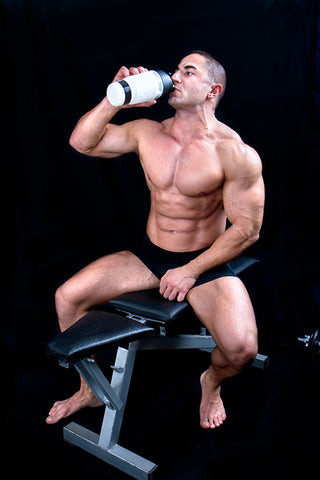
Hydration
People often downplay water intake until it counts in a cosmetic sense. Bodybuilders are notorious for only counting water intake as important prior to a competition. But, in fact, a steady pattern of hydration is crucial for muscle growth, pump, and overall well being during a workout. Food is what most people consider to be the hinge pin of all energy, but don’t look now, it’s also water.
Water is individual for all people. Some do well on less water, some need water constantly. Too much water right before a workout can mean running to the restroom during an intense session. But keeping a jug of water on hand is a smart idea. Sweating, particularly in the summer months, is foe to good results, and can thwart attempts to go heavier or maximize pumps. Pumps – the muscle’s feedback to you that you have enough food and water stored in the form of glycogen – and whether you get them on a regular basis, will tell you if you are on the right track. Without them, you cannot engorge the muscle appropriately and cannot get the maximum amount of growth out of each rep and set.
If you weigh 200 pounds, you should take in at least 1 quart of water daily – more if it’s a heavy workout day. Some mark the gallon as the amount to which you must aspire to have success, but that’s overkill on a daily basis. Look to weather, food, diet, workout schedule, and other factors to decide how much is enough.
Also consider that if you have a competition upcoming, you should leave a little room for shocking the body. Some people might disagree with that, but getting the body to lose that last little bit of water is dependent upon being able to drink a little more during that time, so that your body thinks it has something to relinquish. In other words, if you are already at the gallon mark, on a daily basis, you won’t have any kind of leverage to force your body into releasing more. Add a little more water – like a gallon a day – and deplete carbs for 2 days, and you’ll release a lot of stored water before you fill up with glycogen from carbs added back into the diet. So leave yourself the room to do that.
If you have difficulty getting water into your diet, remember that you can count a lot of other liquids you drink, such as tea or coffee, though they can be slightly dehydrating. But they still count to some extent. You can also add things like Crystal Light into your gallon jug and carry it around with you throughout the day to ensure you get it. Rule of thumb? Whatever works!

Sleep and Recuperation
Some say that 90% of all growth happens over the course of nightly recuperation. Recuperation is key to growth and cannot be pushed aside in favor of things you think are important, such as diet and training. Sleep its recuperative powers are equally important. When the body rests, cell regeneration occurs. Without rest, regeneration does not occur or it occurs in smaller amounts.
Keep in mind that once an opportunity to repair cellular wasting from a workout passes, that window is forever closed. That means you have to rebuild new cells at another time and slow your progress. It’s like starting from scratch. No one wants to start from scratch – it’s completely unnecessary.
Get at least 8 hours of sleep each night – 7 if you can’t help it – and you should repair whatever you did that day. Remember that at least 85% of all growth hormone release happens in the hours of slumber. Without sleep, this cannot occur.
Growth hormone constitutes about 190 amino acids synethsized and secreted by cells called somatotrophs in the anterior pituitary. It controls a great many physiologic processes, including muscle growth and metabolism in adults.
Fat cells also have growth hormone receptors and when bound to them, they encourage the emptying of fat cells. So it isn’t just muscle that makes GH release important. And for every bit of GH you release, your body responds by manufacturing and releasing IGF-1, which is what acts on target cells, within muscle tissue, with such great effect and result.
Recuperation between workouts is also important though. If you wonder whether you’re doing too little or too much in the gym, always err on the side of doing “less”. I say that because while your workouts individually should be hard, intense, grueling and tough, you need to back off once you’re done, and not tinker around in there or go in because you just can’t stay away from the social aspect or the concept that going back in to do “something” is productive. It isn’t.
Even if you trained 3-4 days a week, but those days were intense and grueling, you could feasibly take the rest off and get better growth than if you were doing 5 days a week. Some people will do one body part a day, 5 days a week, but hit that one body part so hard they can’t move. They then get 6 days to rest that body part in between. Do it either in days or in time between workouts for a particular body part, and you’ll benefit greatly.
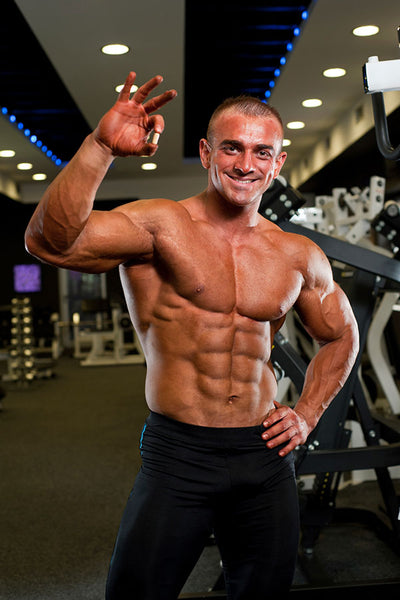
Supplements
Supplements are key to growth and a very important part of the diet. We say diet because you need food to live, and you need supplements to grow. You cannot get away with just a sound diet and a few good days a week in the gym if you expect to pack on mass.
Supplements bridge the gaps in our diets and bridge us between cycles. Some are foundation supplements and others are for a specific purpose and are used in shorter term – such as in a cycle. Some Testosterone Boosters are like that and should not be taken on an ongoing basis. Supplements like BCAA's, which can be taken more often, should be taken judiciously to keep it working effectively.
Supplements like protein powder and vitamins should be taken everyday, and never skimped on.
Here is a list of supplements you should include in your program:
Protein, Meal replacement packets, amino acids, BCAAs, Creatine, Glutamine, Test Boosters, hGH boosters, vitamin packets for high activity, HMB, Non-Hormonal anabolic agents, Nitric Oxide, TridenosenH, ZMA.
Heavy Training: Low Rep v. High Rep
Heavy training can, and should, be a part of your periodization strategy. In fact, heavy training is so important to talk about when talking big arms, that it merited a whole separate section.
A lot of people train individual sets and reps in an exercise, or they’ll superset or tri-set or giant set. We recommend you doing at least one of those every 10 days or so. Train normally, and then crank up the heat.
But what of repetition number?
This has been a hotly debated issue for years now – to train with higher rep or lower rep, and whether to keep weights heavy and still use high reps.
The answer is both.
Guys like Shawn Ray got to be as consistently hard and conditioned and full by training heavy almost all the time. Not powerlifitng heavy, but bodybuilding heavy. And unlike a lot of other lazier pros, he kept the intensity high by keeping the weights high and the reps high. On average, he would train at least 10-12 reps per set, sometimes going to failure when he felt it was necessary.
Truly a “by feel” trainer, that’s how you should employ rep and set schemes. Pay attention! Pay attention to anything and everything that happens to you during a workout. Eat to accommodate training, not appetite and you’ll have the energy to train heavy and high intensity/ high rep.
Remember, don’t overdo the sets when you go higher rep. In fact, you should cut the sets down by one if you’re going an extra 3-4 reps per set using heavy weight. You’ll even get to the point where you know which exercises benefit you in this type of training and which do not. Only use what works. Sound obvious? You’d think. But that’s not the case with most people who just include an exercise in a heavy training routine because they think they should. Include the exercises that pack on the most mass, are the more inclusive of multi-joint benefit and ones you can sustain a high level of intensity throughout.

Triceps
Triceps Pushdowns 4 x 10
Skull Crushers 4 x 10
Overhead Triceps Extensions 4 x 12
Dips 2 x failure
Biceps
Incline bench dumbbell curls 4 x 8
Preacher Curls 4 x 10
Hammer Curls 4 x 12
Low Cable Pulley 1 x failure at the end of the workout
This has a lot of room for tailoring to your own body. Whether in the amount of weight you use, or the type of bar you use, as well as adding forced reps, negatives, pyramids, etc.
The point here is to take a routine like this and make it your own. You see plenty of routines online and they all either look basic or they look complex and too much like the guy who has written them down. Remember, a training routine is a living thing. It can be altered to suit you, and it will change with you as you grow and build mass. You can use the exact same routine and have it look different each time you step into the gym, by using tri-sets, or any of the types of repetition forms I just mentioned.
Writing your workouts down in a training journal is a good idea – not because you want to become some workout geek, but because it benefits you to see where you have been and where you are now. That’s important information to know and helps you construct something different next time. It also gives you an idea of what you’ve already done and maybe want to wait to do again. Experiment with everything from load to set and rep number to failure to varying repetition and set type to find what gives you the best results.
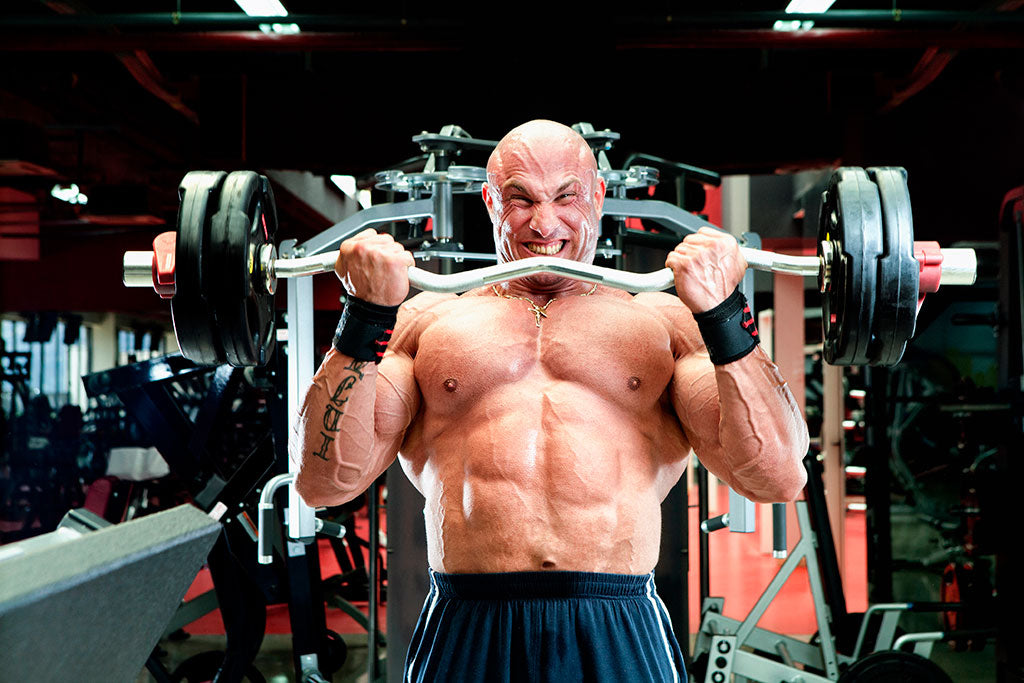
Training Aids
Training Aids are anything that help you to complete an exercise within a workout. For the arms, that means everything from arm blasters to apparatus like a preacher bench. It’s really important to have a variety of training aids for the arms, since like the legs, they require a good deal of creativity to get them to grow.
You probably have one area of the arms that grows better than the other. For some, it’s effortless biceps growth. For others, it’s gargantuan triceps.
Always keep straps with you in your gym bag, and always keep wrist wraps for sure. These are great tools for bis and tris and can push you to use heavier weights. Wrapping when doing bar work in biceps curls is important because you can pull heavier without needing the grip strength. Your grip strength will catch up sooner or later, but until it does, use straps.
Also, use a lot of different attachments and apparatus in the gym. Use the preacher bench often for biceps, do several different forms of dips – from upright roman chair type dips, to dips between two benches, to Nautilus or Cybex type machine dips.
Use attachments – like single handles – to make your arms work independently of one another. This is a great training aid that I wouldn’t be without in my workouts. It’s great to say you can lift X amount with an EZ curl bar, stabilized, and with wraps. But can you do a biceps curl, one armed, with a cable and handle attached? That is the measure of success and a meter as to whether you can handle the weight.
Arm blasters are also great tools for isolating and for building specific parts of the biceps – mostly the outer head. Make sure your gym has one. If it doesn’t, order one and use it at least every other workout.

